Discover how characters starting with 'S' in the Bible influence faith and morality, shaping the narrative in unexpected ways.

Characters in the Bible
You'll encounter characters in the Bible who are not merely figures of historical narratives, but pivotal agents shaping the theological and ethical fabric of Christianity. From Adam and Eve, whose disobedience introduces original sin, to Noah who embodies God's covenant via the Ark, each character serves a distinct purpose. Abraham's tests of faith, Joseph's prophetic dreams amidst betrayal, and Moses's leadership and legal foundations through the Ten Commandments all illustrate complex interplays of faith, law, and morality. Characters like David and Solomon reflect the tumultuous nature of leadership, while Jesus redefines love and morality through his teachings and sacrifices. Exploring these lives offers deeper insights into spiritual and moral dimensions.
Key Takeaways
- The Bible features key figures like Adam, Eve, Moses, David, and Jesus, each pivotal to its theological narratives.
- Characters such as Noah, Abraham, and Joseph highlight themes of faith, obedience, and divine intervention.
- Moses is crucial for his role in delivering the Ten Commandments and leading the Israelites out of Egypt.
- King David and Solomon are significant for their leadership, moral complexities, and contributions to Israel's history.
- Jesus is central in the New Testament for his teachings, miracles, and role in Christian salvation.
Adam and Eve's Disobedience
Adam and Eve's act of disobedience, as recounted in the Genesis narrative, marks a pivotal moment in biblical theology, symbolizing the inherent human propensity to transgress divine commandments. This seminal event introduces the concept of Original Sin, a theological doctrine suggesting that humanity is in a state of sin from birth, inherently separated from divine grace. This doctrine is essential for understanding the moral and spiritual condition of all humans, according to traditional Christian interpretation.
In the story, the act of eating the forbidden fruit in the Garden of Eden—often referred to as Paradise—results in what's poetically termed 'Paradise Lost.' This metaphor extends beyond the physical expulsion from Eden to signify a spiritual severance from God, who had walked and talked directly with Adam and Eve. Your understanding of this narrative isn't just about the loss of a utopian abode but reflects a deeper, more profound loss of innocence and direct communion with the divine.
The repercussions of this event are profound and enduring, influencing countless aspects of Christian doctrine, including the necessity for salvation and the role of Christ as redeemer. Therefore, this narrative isn't merely an ancient story but a foundational element that shapes the entire trajectory of Christian theology and human self-understanding.
Noah's Ark and Covenant
Following the narrative of Adam and Eve, the story of Noah's Ark and Covenant emerges as another profound confirmation to the endurance of divine judgment and grace in biblical history. You'll find that the Ark, built by Noah at God's command, was more than mere refuge; it was a vessel of survival amid divine retribution. The covenant that followed the flood, signified by the rainbow, was a promise of mercy and a pivotal moment in the unfolding biblical schema of redemption.
Noah's obeisance to God's directive to save animal pairs is particularly remarkable. Each species entered the Ark in pairs to uphold the continuity of life post-flood. This meticulous preservation underscores a divine foresight and the sanctity of all creatures in the divine plan.
The flood duration, lasting forty days and nights, was not just a period of destruction but also of purification and renewal. This protracted time frame allowed a complete reshaping of the Earth and its inhabitants, setting the stage for a renewed covenant between God and humanity.
To help you visualize, consider this table depicting key aspects of the Ark:
Feature |
Description |
Biblical Significance |
|---|---|---|
Size & Structure |
Large enough to hold all specified beings |
Symbol of God's provision |
Animal Pairs |
Two of every kind |
Preservation of life |
Flood Duration |
Forty days and nights |
Period of judgment and renewal |
Covenant Sign |
Rainbow |
Symbol of divine mercy |
Post-flood Command |
Be fruitful and multiply |
Renewal of life and divine mission |
Through this analysis, you're invited to explore further into the complexities and divine intentions within this epic biblical account.
Abraham's Trials and Faith
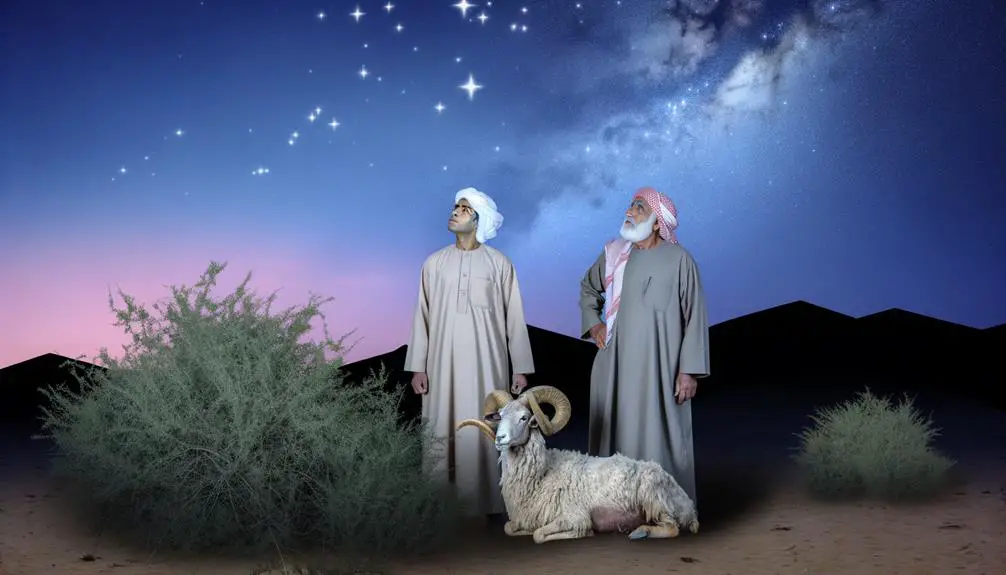
You'll find that Abraham's trials, particularly the sacrificial test in which he was commanded to offer his son Isaac, underscore a profound narrative on obedience and faith in divine promises. This moment, coupled with the covenant God establishes with him, not only defines Abraham's character but also sets a foundational precedent for the themes of faith and covenantal relationships throughout the biblical text. Analyzing these episodes reveals complexities in Abraham's responses and the theological implications of his tests that resonate across successive scriptural narratives.
Abraham's Sacrificial Test
In one of the most profound biblical narratives, Abraham's faith is rigorously tested when God commands him to sacrifice his son Isaac. This command plunges Abraham into a deep moral dilemma, confronting him with a test of faith versus ethical convictions. You might wonder, how could Abraham reconcile his devotion to God with the love for his son? This narrative isn't just about obedience; it's a complex exploration of faith's dynamics under extreme pressure.
Abraham's willingness to comply, despite the emotional turmoil, highlights a pivotal moment in biblical theology—faith's reward. His act of faith, halted by divine intervention at the last moment, signifies not just a test passed, but underscores a profound trust in divine wisdom and purpose, setting a foundational example for future generations.
Covenant With God
Why does the covenant with God stand as a critical juncture in Abraham's spiritual journey, shaping both his trials and his unwavering faith? This pivotal moment isn't just about divine promises; it's a profound commitment that tests and fortifies Abraham's trust in ways you can scarcely imagine. Here's how:
- Divine Promises: The covenant, rich in pledges from God, assures Abraham of descendants as numerous as the stars, establishing a legacy intertwined with divine favor.
- Ritual Observances: The physical act of circumcision is introduced as a perpetual sign of this covenant, marking a tangible, daily reminder of Abraham's bond with God.
- Spiritual Trials: Each challenge Abraham faces serves to refine his faith, ensuring his steadfast adherence to the covenant, despite any adversities.
This covenant isn't merely a contract; it's the bedrock of Abraham's spiritual identity.
Joseph's Dreams and Betrayals
Throughout his youth, Joseph's vivid dreams not only foreshadowed his future path but also stirred deep-seated jealousy among his brothers. These dreams, ripe with prophetic imagery, weren't merely nocturnal visions but were laden with significant implications for dream interpretation in a biblical context. Joseph, favored by his father Jacob, relayed dreams where sheaves of wheat bowed to his sheaf, and celestial bodies—sun, moon, and eleven stars—prostrated before him. Such dreams, symbolizing his future ascendancy over his family, catalyzed his brothers' animosity.
This brotherly jealousy, deeply etched within the narratives, showcases a recurrent biblical theme where familial relationships are tested by divine destinies. Joseph's brothers, unable to contain their envy, conspired against him, leading to acts of betrayal that are as strategic as they are spiteful. You observe that their actions—selling Joseph into slavery—were driven not merely by jealousy but by a fear of losing their patriarchal inheritance. This narrative pivot underscores a broader theological discourse on the consequences of envy and the resilience required to endure and overcome profound adversities.
Joseph's story, marked by dreams and betrayals, ultimately serves as a foundational lesson in the complexities of human emotions and divine providence within biblical literature. Analyzing these elements, you gain insights into the interplay of destiny, power, and redemption.
Moses: Freedom and Law
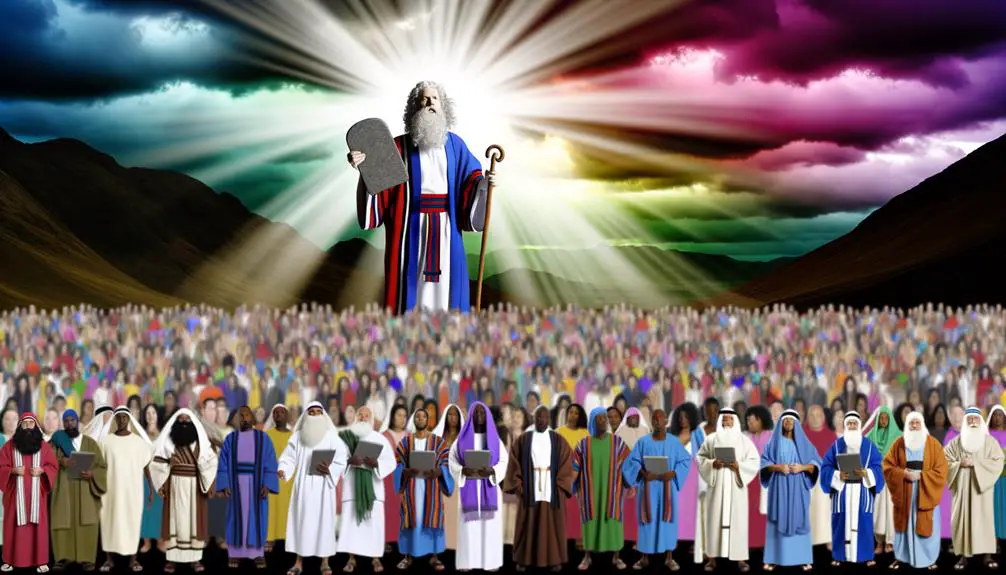
As you explore Moses' role in biblical narrative, you'll find his leadership journey crucial in the shift from Egyptian bondage to the quest for Canaan. The delivery of the Ten Commandments stands as a cornerstone, not only shaping ancient Israelite law but also influencing Western legal systems. Lastly, the Red Sea crossing, a miraculous event in scriptural accounts, symbolizes a definitive moment of liberation and faith for the Israelites.
Moses' Leadership Journey
Moses' ascent to leadership, marked by his liberation of the Israelites and establishment of divine law, epitomizes a transformative journey from reluctant shepherd to revered prophet. You'll notice how Moses' humility and unique leadership style were pivotal throughout his mission. Initially doubting his capabilities, Moses grew into his role under divine guidance, emphasizing a leadership that was both servant-oriented and authoritative.
- Reluctant Beginnings: Moses hesitated to accept his calling, showcasing his humility and self-doubt.
- Empathetic Leadership: He consistently sought to understand and alleviate the sufferings of his people.
- Strategic Governance: Moses implemented strategies that would sustain communal harmony and adherence to newly established laws, without overstepping the divine directions he received.
This journey highlights the duality of Moses' character: deeply human yet extraordinarily called.
Ten Commandments Delivered
Upon reaching Mount Sinai, Moses received the Ten Commandments, a pivotal moment that solidified the legal and ethical foundations for the Israelites. This event wasn't merely about religious mandates; it was about forming a cohesive society bound by shared moral standards. You must consider the profound moral implications these laws introduced. They provided a framework that not only governed individual behavior but also shaped the societal norms and judicial practices of the Israelite community.
The societal impact was immense, fostering a sense of unity and purpose among the Israelites. By adhering to these commandments, they could maintain social order and justice, which were essential for their survival and identity as a people freed from Egyptian bondage. The commandments became a cornerstone of their communal life and spiritual identity.
Red Sea Crossing
The crossing of the Red Sea represents a critical juncture in the narrative of Israelite emancipation, symbolizing both literal and metaphorical liberation under Moses' leadership. This pivotal event is marked by several key elements:
- Pharaoh's Defiance: Despite numerous plagues that devastated Egypt, Pharaoh's hardened heart led to a relentless pursuit of the fleeing Israelites, setting the stage for a dramatic showdown.
- Miraculous Parting: At Moses' command, God parted the waters of the Red Sea, creating a path of escape that was both a divine intervention and a test of faith for the Israelites.
- Final Escape: The closing waters over the Egyptian army underscored a decisive end to Israelite bondage, reinforcing the theme of divine deliverance and justice.
This episode underlines the transformative power of faith and leadership in overcoming oppression.
King David's Reign and Challenges
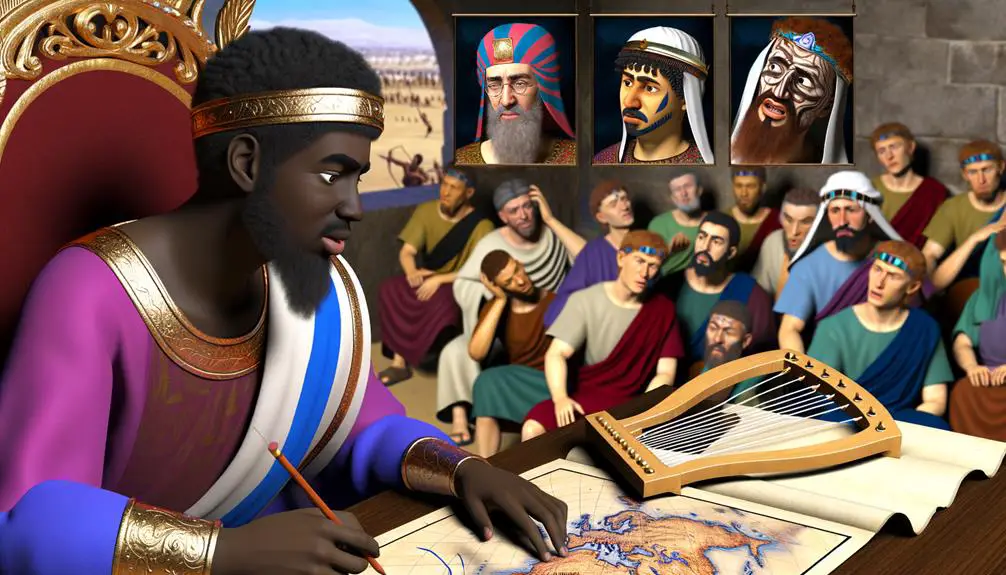
King David's reign, marked by both notable achievements and profound challenges, fundamentally shaped the biblical narrative of leadership and morality. You'll find that David's court wasn't just a political hub but also a cultural epicenter, greatly influenced by David's musicians. These artists, whom David appointed, played a crucial role in setting religious and cultural tones, intertwining worship with governance. This integration of music and ceremony enriched the spiritual and communal life of Israel, fostering a unique blend of governance and divine worship which set precedents for future generations.
Under David's rule, you'd also observe intense military engagements, particularly the ongoing Philistine conflicts. His strategic prowess was demonstrated in his ability to subdue the Philistines, whose threats loomed over Israel's security. These victories not only stabilized his kingdom but also elevated his status as a formidable leader and warrior king. However, these triumphs brought their own set of challenges, from internal dissent to the moral dilemmas of war and leadership, which continually tested David's resolve and ethical judgments.
Thus, David's era was one of complex layers where cultural advancements and military challenges intertwined, shaping how leadership is perceived in the scriptural context.
Solomon's Wisdom and Downfall
While David's rule was characterized by military and cultural milestones, his son Solomon's reign is famously noted for its profound wisdom and eventual moral failings. Solomon's wisdom initially set a high bar for leadership, as evidenced by biblical narratives and historical accounts that laud his discernment and judiciousness.
- Temple Construction: Solomon's era was marked by monumental architectural achievements, most strikingly the construction of the First Temple in Jerusalem. This grand project not only symbolized religious devotion but also political stability and economic prosperity. It was a physical manifestation of Solomon's vision and God's covenant with David.
- Queen of Sheba: Solomon's reputation for wisdom reached far beyond Israel's borders, attracting figures such as the Queen of Sheba. Her visit, as described in the scriptures, underscores Solomon's international prestige and the global recognition of his intellectual and spiritual insights. Their exchange highlights a period of diplomatic flourish and cultural exchanges that enriched Solomon's court.
- Moral Downfall: Despite these achievements, Solomon's reign was not without its flaws. His later years were tarnished by excessive opulence, political missteps, and idolatry, influenced by his many foreign wives. These actions ultimately led to divine disfavor and the fracturing of his kingdom posthumously.
Solomon's story serves as a complex narrative of a rise filled with wisdom and achievement, shadowed by a decline rooted in moral compromise.
Daniel in the Lion's Den

CURRENT SUBTOPIC: 'Daniel in the Lion's Den'
In analyzing the biblical narrative of 'Daniel in the Lion's Den,' one observes a profound exploration of faith under duress, where Daniel's unwavering trust in God is tested through his survival in a den of ferocious lions. As an emblem of bravery and dominion, lion symbolism in this story underscores the stark contrast between the king's earthly power and Daniel's divine protection. The lions, typically forces of destruction, are rendered harmless, illustrating the theme of divine supremacy over mortal authority.
Angelic intervention plays a pivotal role in this narrative. It isn't just about Daniel's faith but also about how divine forces actively participate in the lives of believers. When you consider that an angel shut the lions' mouths, you're seeing a vivid demonstration of celestial power in human affairs.
Here's an analytical breakdown of key components:
Element |
Symbolic Meaning |
Impact on Narrative |
|---|---|---|
Lions |
Power, dominion |
Show divine control |
Daniel's Faith |
Trust in God |
Enables survival |
Angelic Intervention |
Divine protection |
Safeguards well-being |
King's Decree |
Earthly authority |
Tested by divine will |
Outcome |
Triumph of faith |
Reinforces themes |
Each element intertwines to craft a tale of faith, power, and divine intervention, emphasizing that true authority comes from unwavering belief and divine support, not from human decree or physical might.
Jesus: Teachings and Sacrifice
Jesus's teachings and sacrifice fundamentally redefine concepts of love, morality, and redemption in a manner that continues to influence ethical frameworks and spiritual beliefs globally. Through His life and words, you find a blueprint for personal and communal living that challenges and transforms.
- Parables explained: Jesus utilized parables—simple stories with deep, moral undertones—as a primary teaching tool. These stories, rich in symbolism, weren't just to entertain but to enlighten. For instance, the Parable of the Good Samaritan stretches the understanding of "neighbor" beyond social or ethnic boundaries, advocating for a universal, inclusive love.
- Miraculous healings: The Gospels are replete with accounts of Jesus's healings, which serve not only as demonstrations of divine power but also as critical enactments of His teachings on compassion and mercy. These acts confirmed His messages of hope and redemption, illustrating that spiritual and physical salvation were intertwined.
- Ultimate sacrifice: The crucifixion, a culmination of His earthly mission, epitomizes the ultimate sacrifice for others' sins, highlighting a pathway to forgiveness and eternal life. This selfless act underscores the profound narrative of redemption and love, central to Christian theology.
These elements of Jesus's life emphasize a revolutionary approach to human relationships and divine connection, urging you to reflect on your values and actions in light of these teachings.
Frequently Asked Questions
How Do Archaeologists Verify Locations Mentioned in Bible Stories?
To verify locations from ancient texts, you'd see archaeologists using geographic mapping and examining historical artifacts. These methods provide tangible evidence, aligning physical data with documented sites to establish authenticity and accuracy.
What Languages Was the Bible Originally Written In?
The Bible was primarily written in Hebrew, Aramaic, and Greek. Understanding scriptural translations and manuscript evolution helps you appreciate the text's depth and historical context, enhancing your analysis of its origins.
Are There Any Lost Books of the Bible?
Yes, there are texts considered "lost books" of the Bible, often termed apocryphal. These writings spark canonical debates due to their historical context and theological significance, yet they're not included in the standard canon.
How Do Different Religions Interpret the Creation Story?
Different religions interpret the creation story through comparative theology, highlighting mythological parallels and unique doctrinal interpretations. You'll find diverse narratives that both contrast with and complement each other in fascinating, intricate ways.
What Role Do Angels Play Across Various Biblical Narratives?
You'd think angel hierarchy was just celestial bureaucracy, but it's key. Angels play varied roles, from messengers to guardians, deeply embedded in the narratives, shaping events with unseen, yet meticulously ordained, influence.

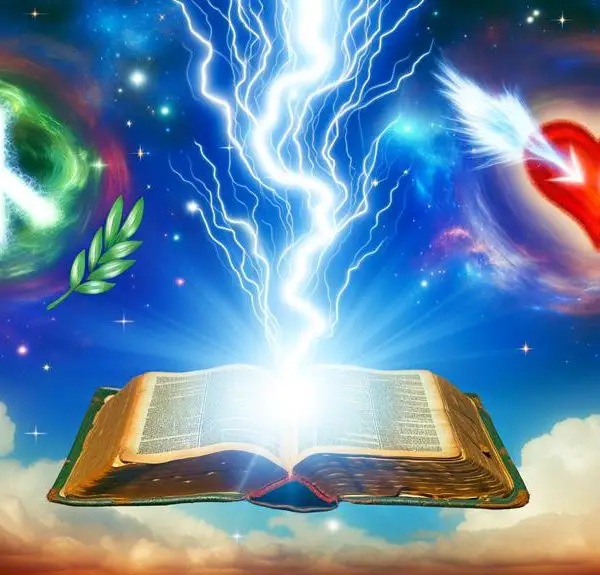
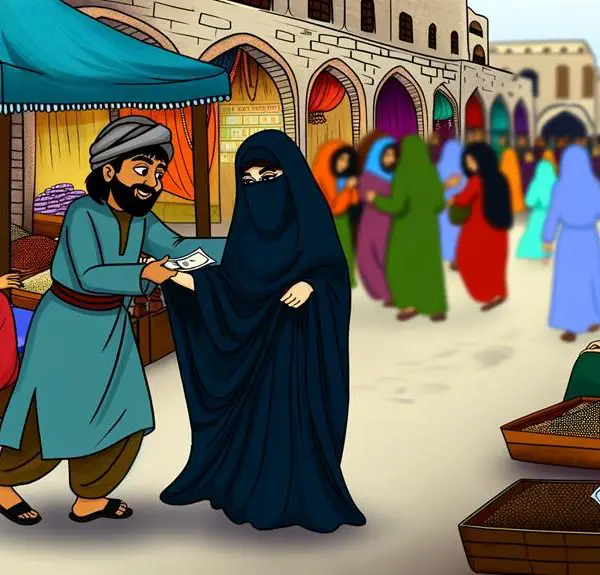
Sign up